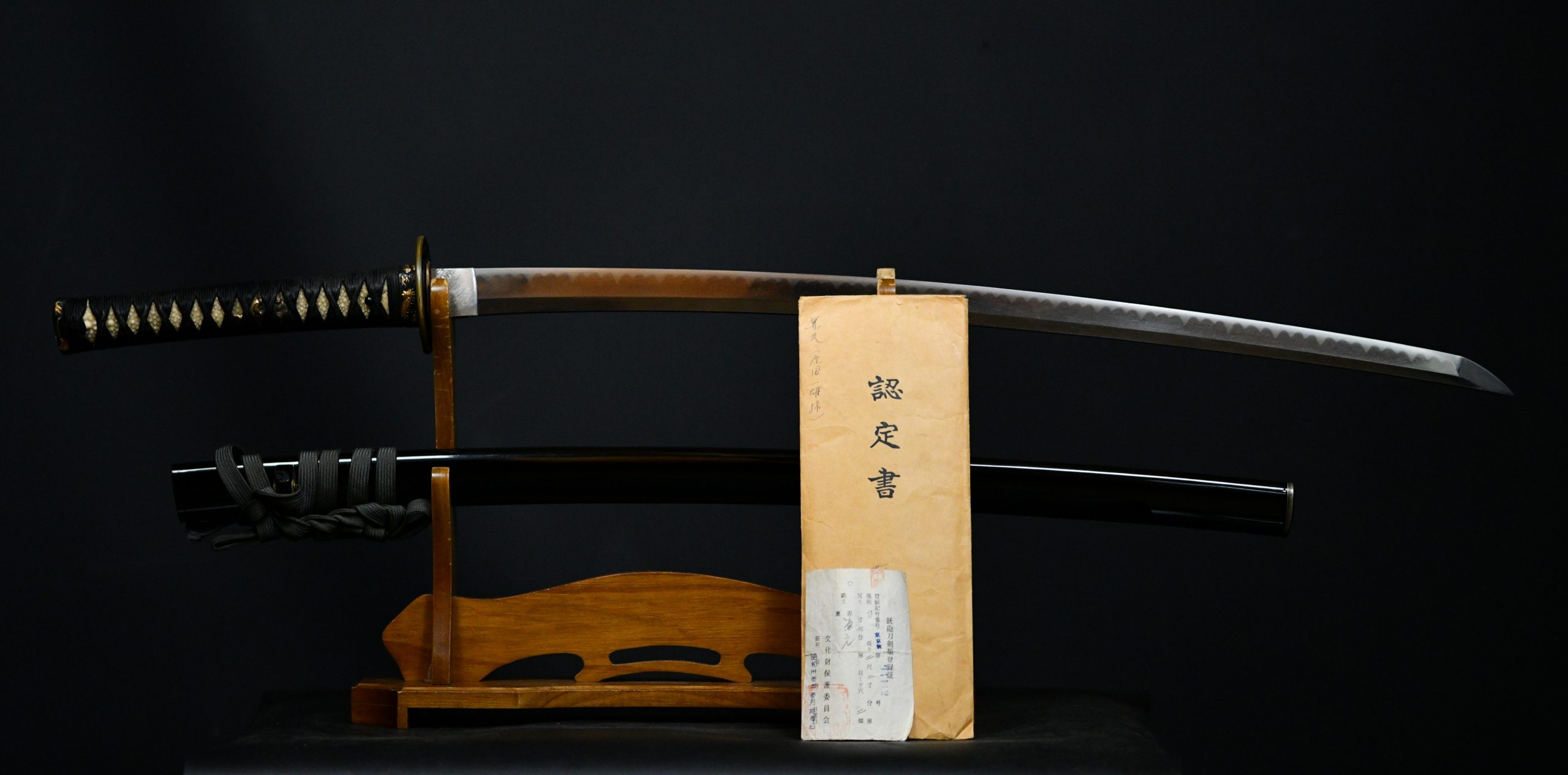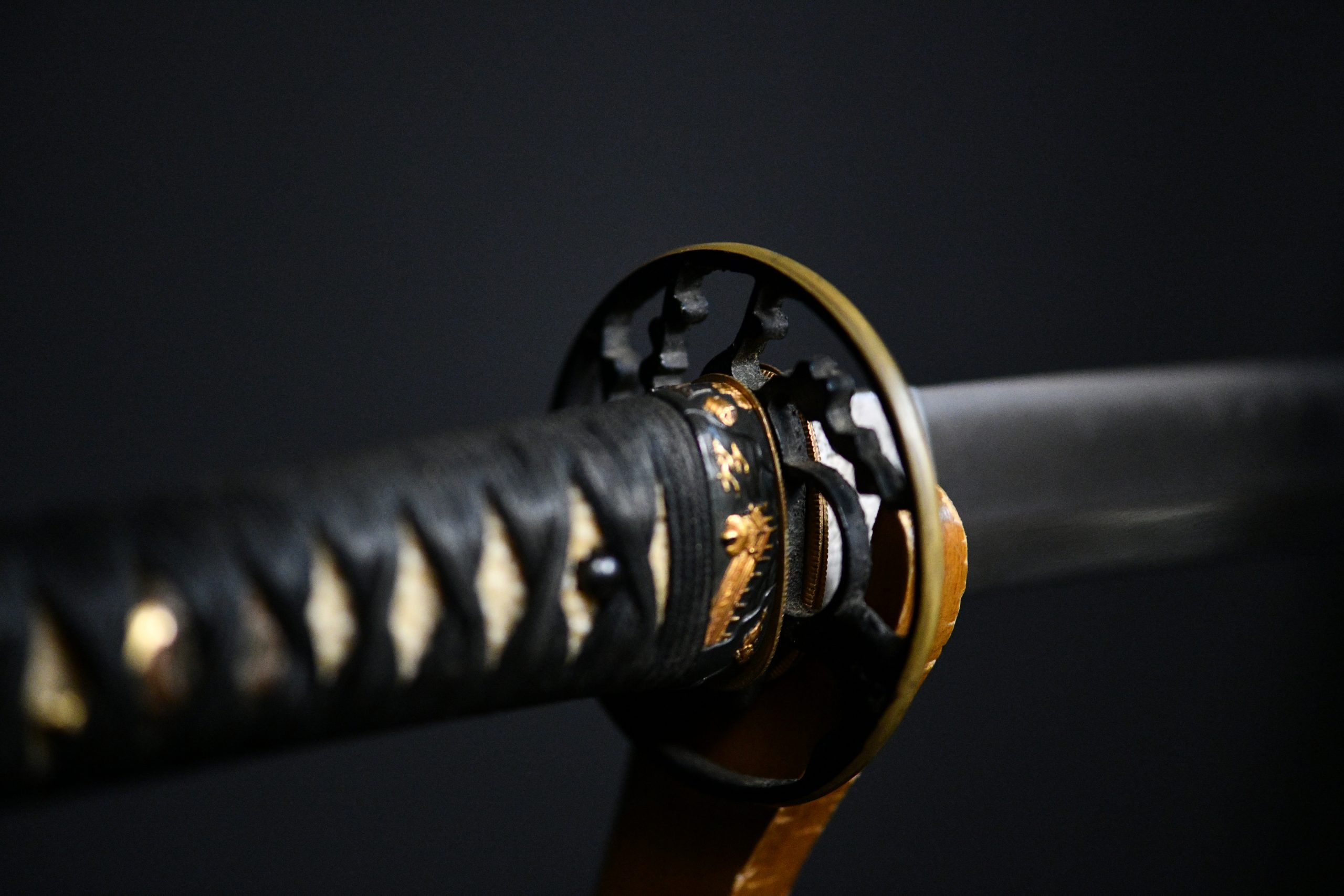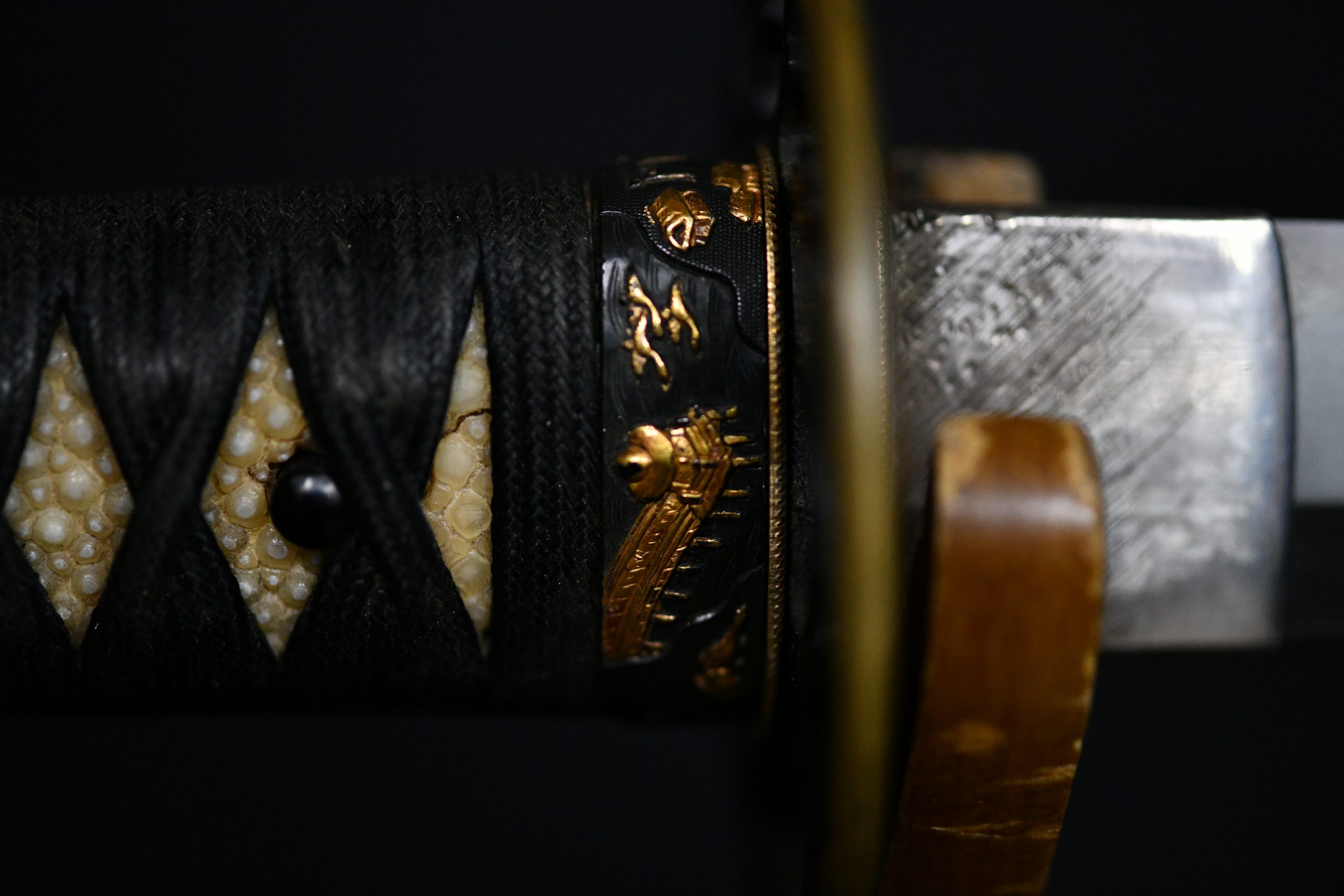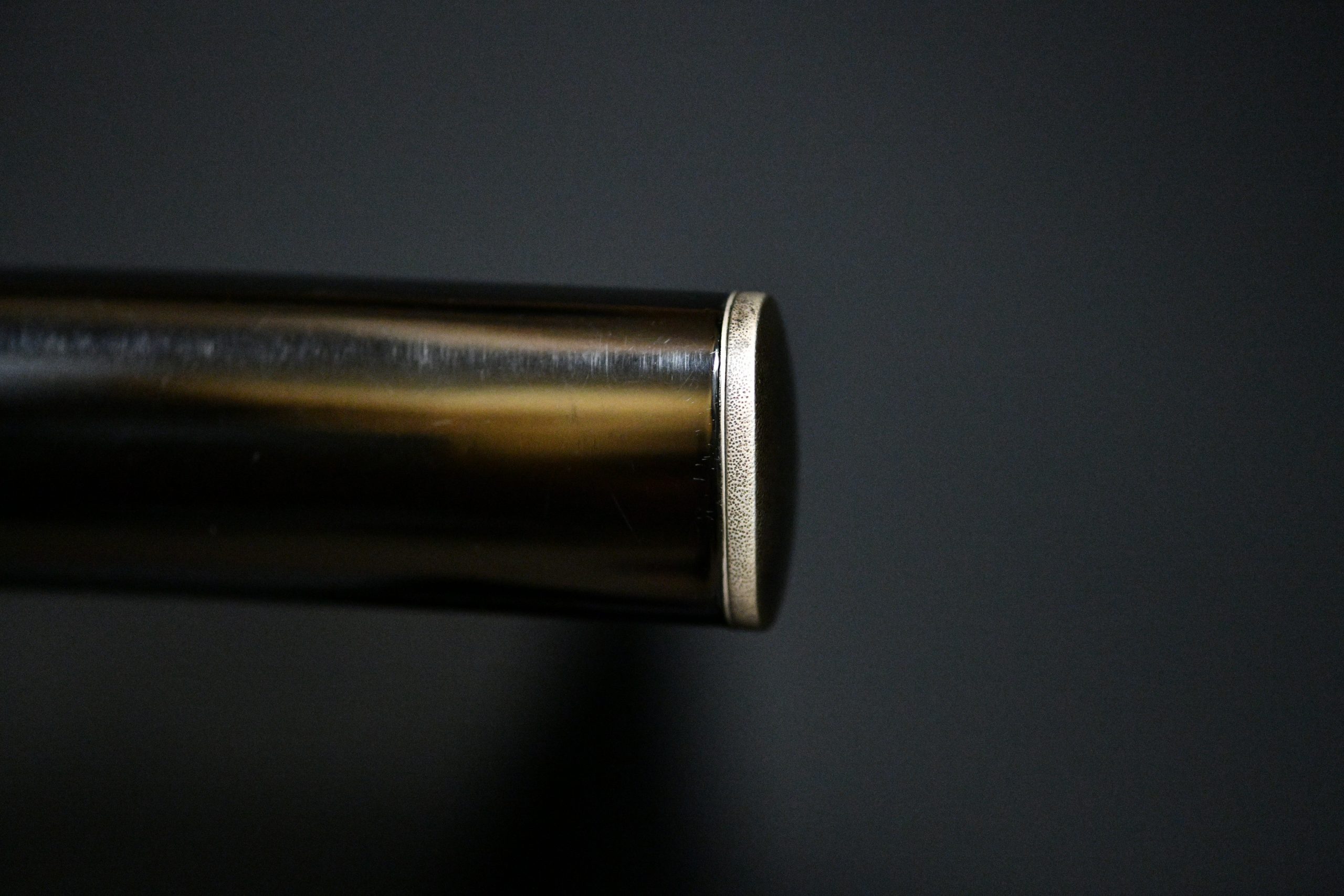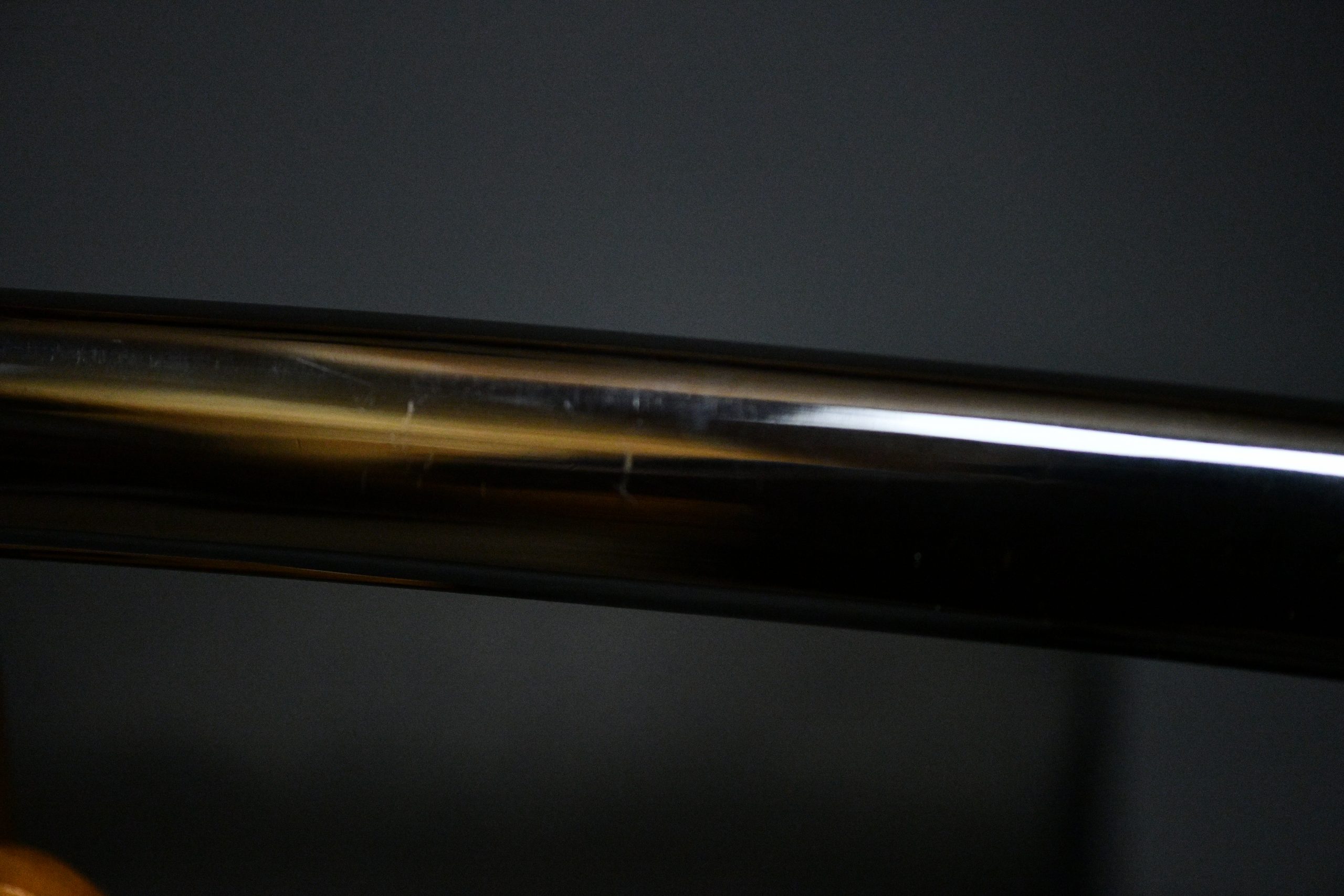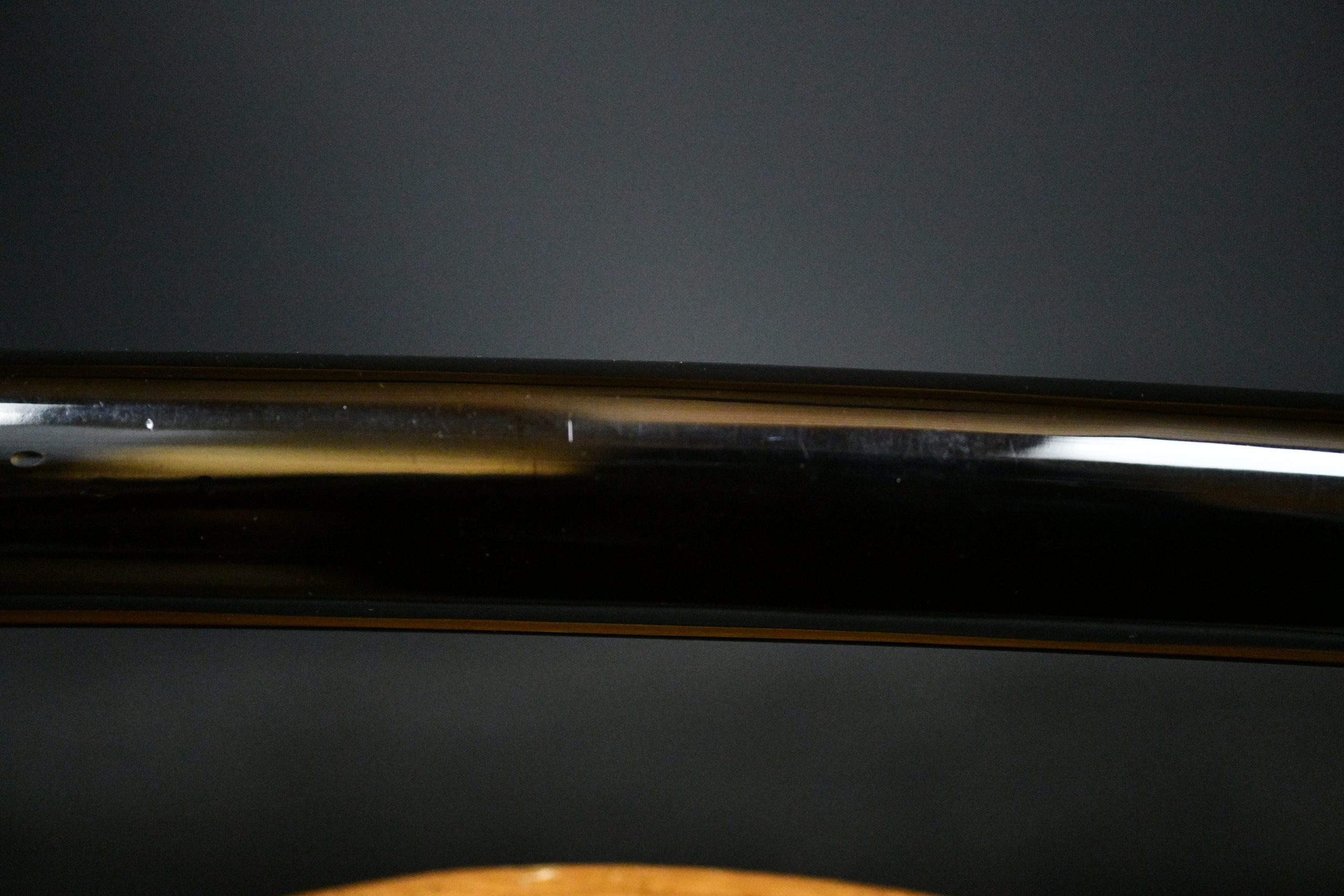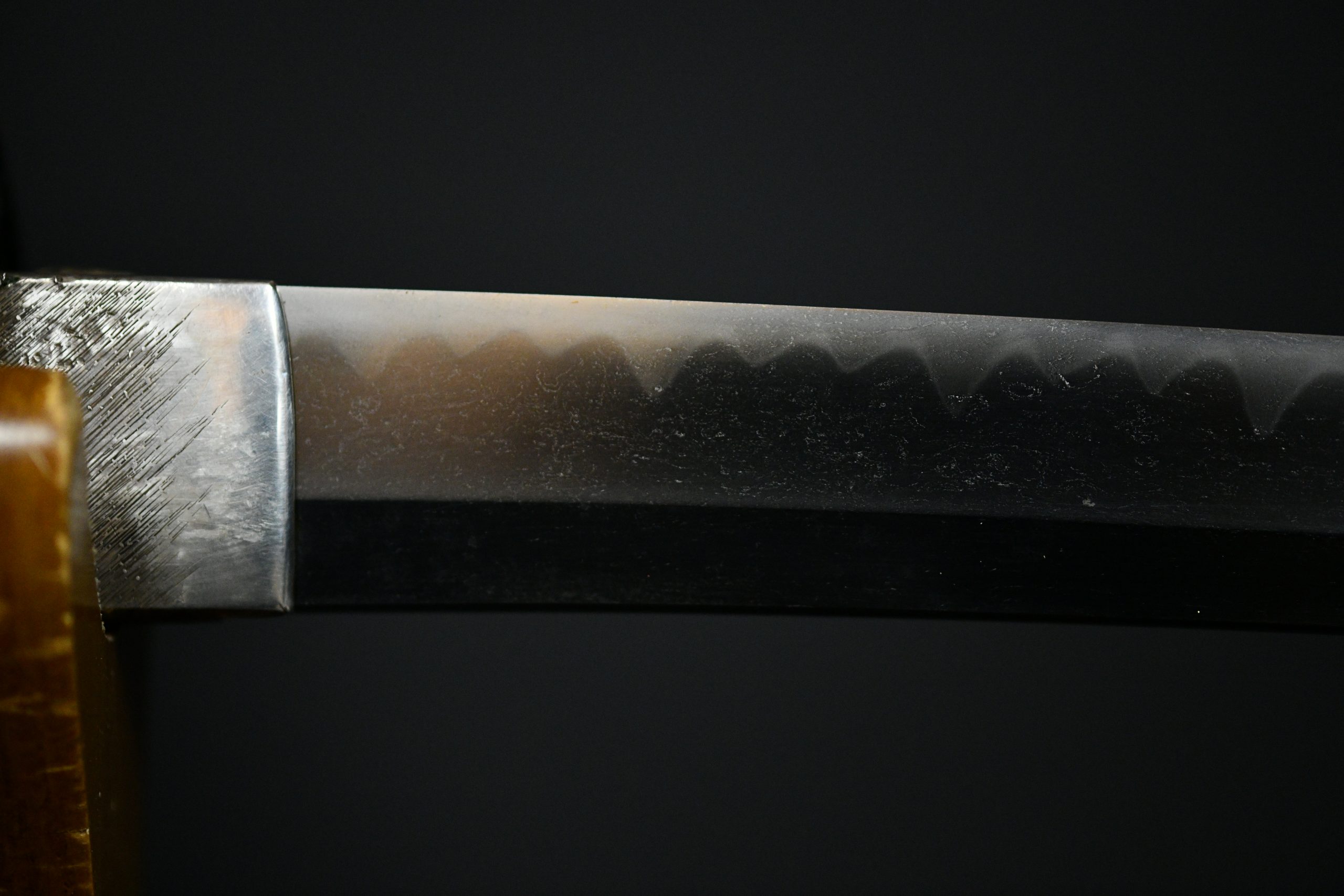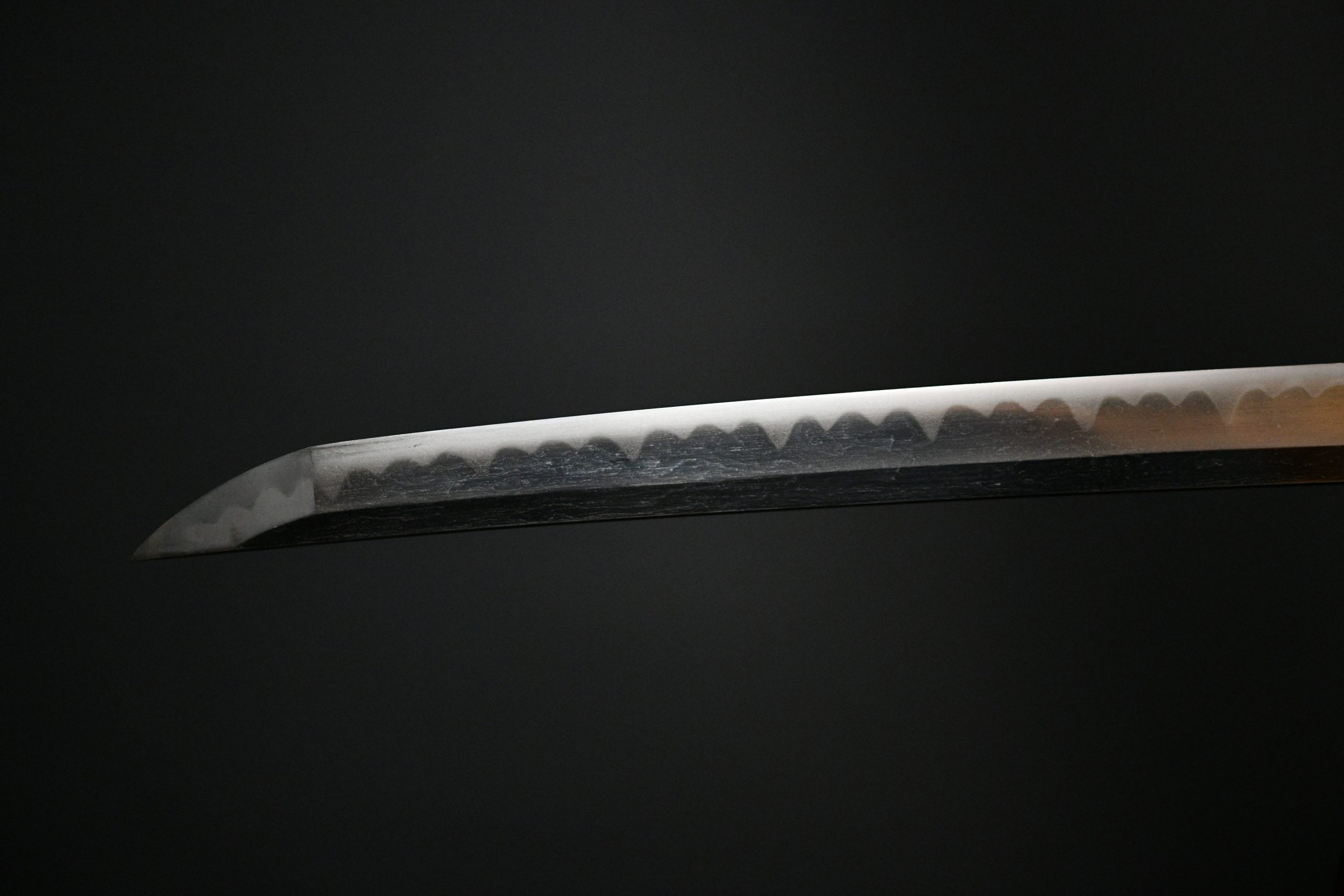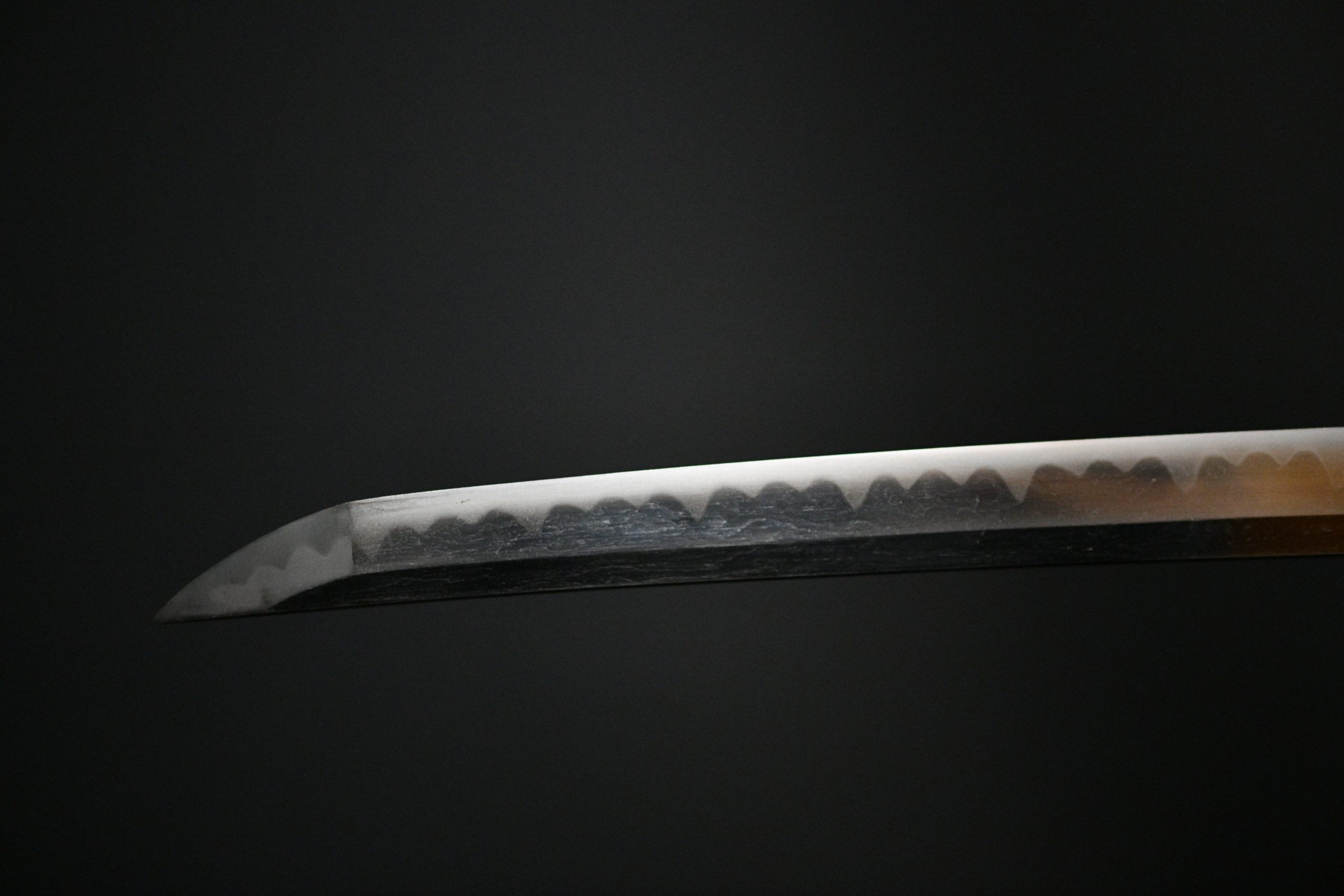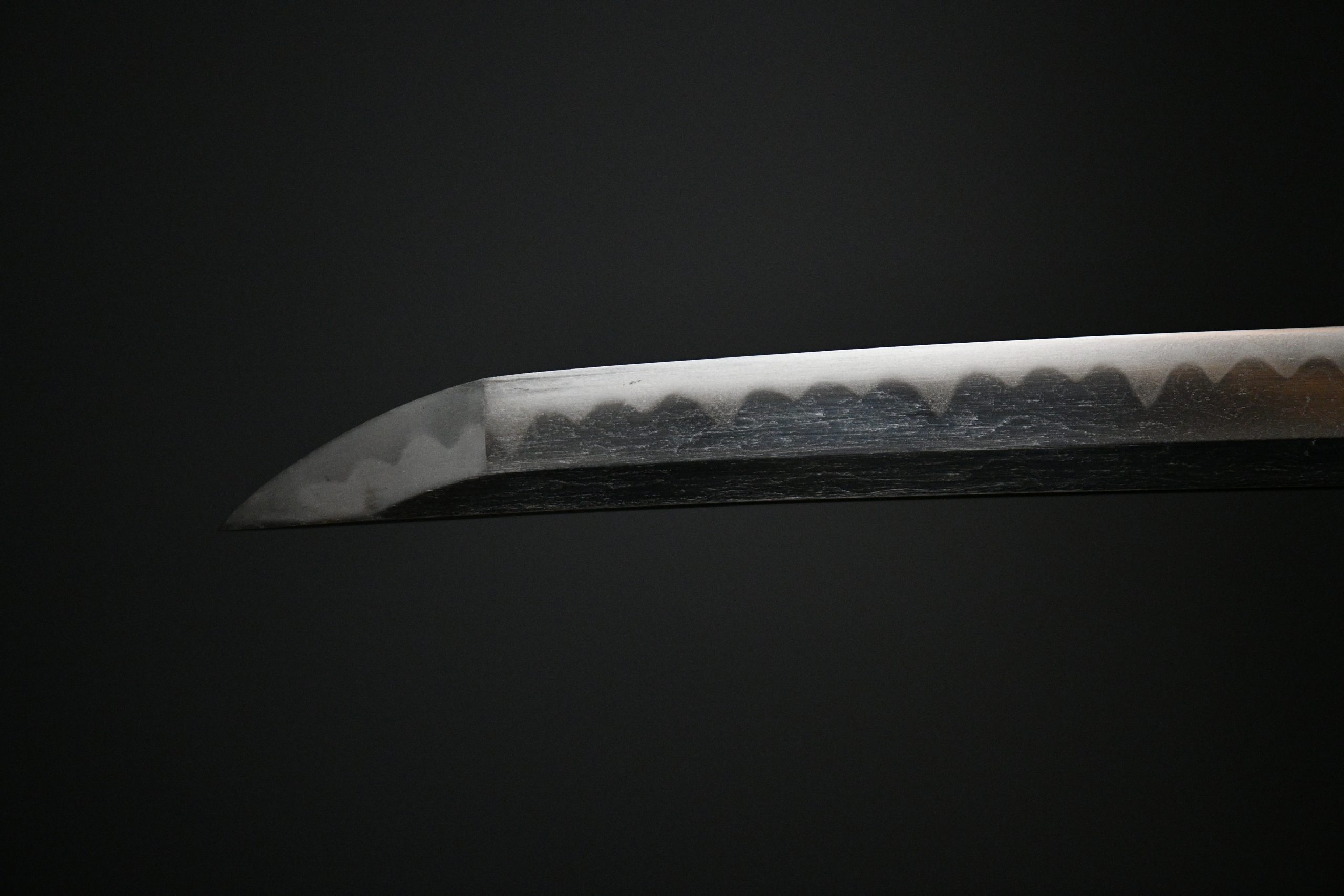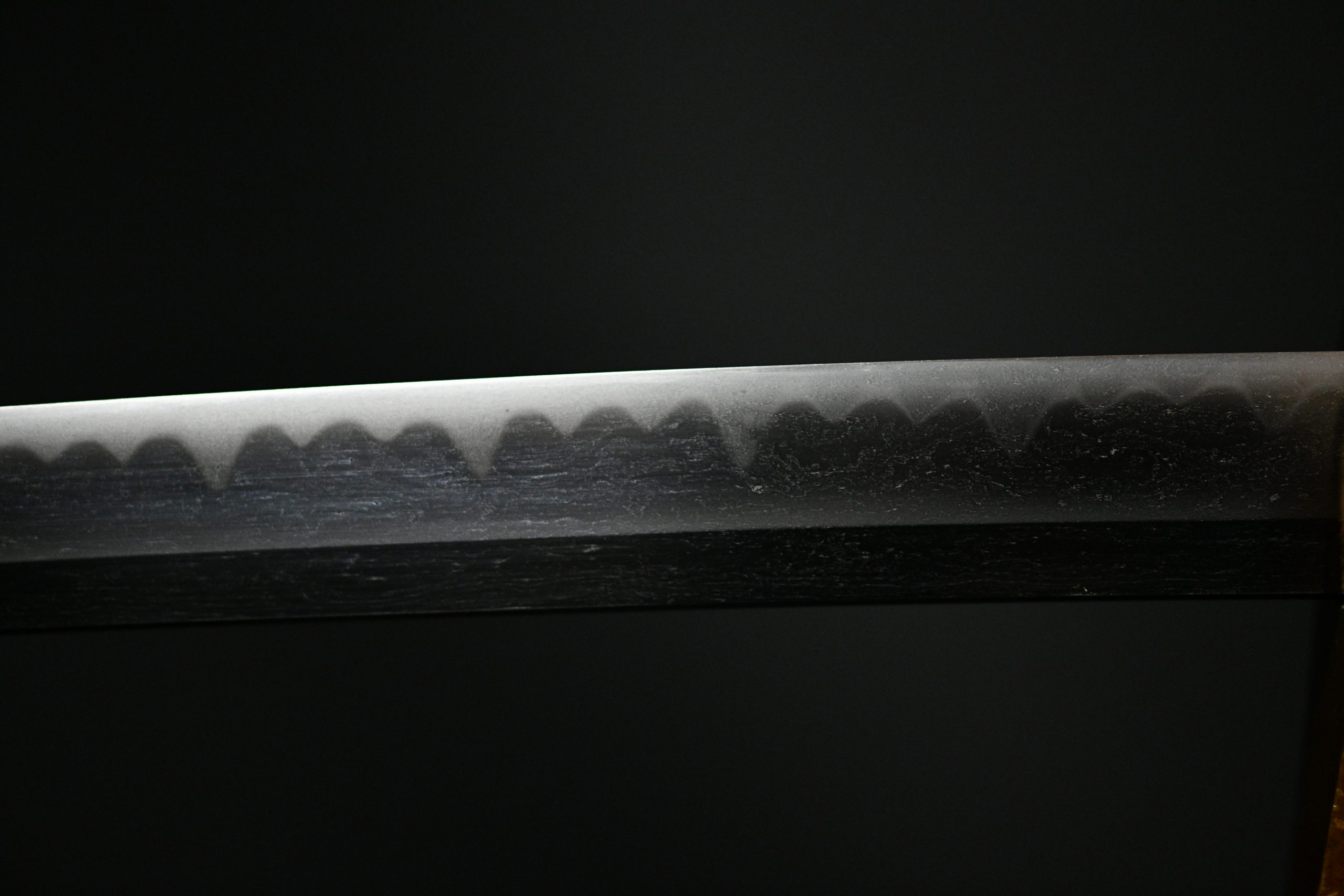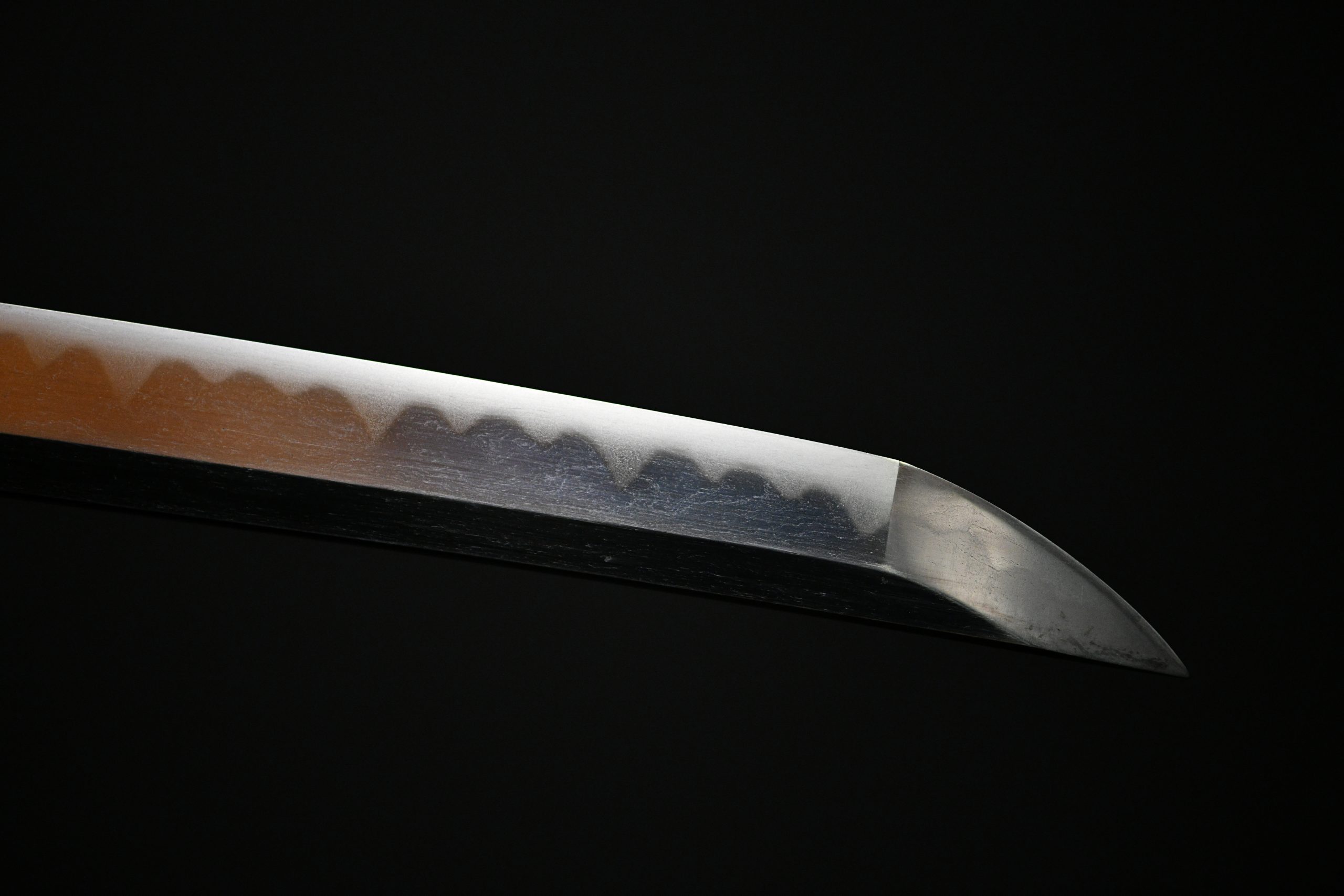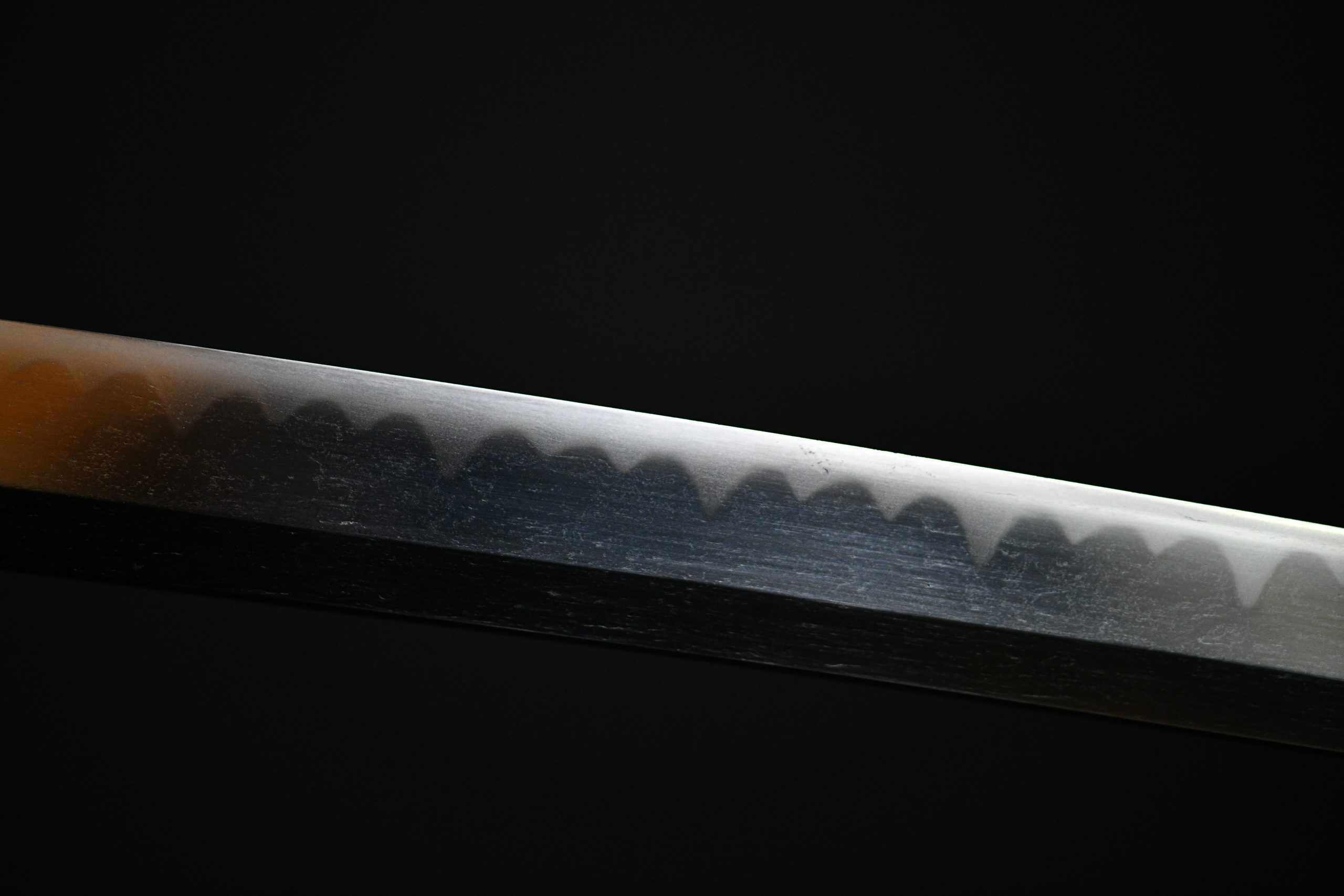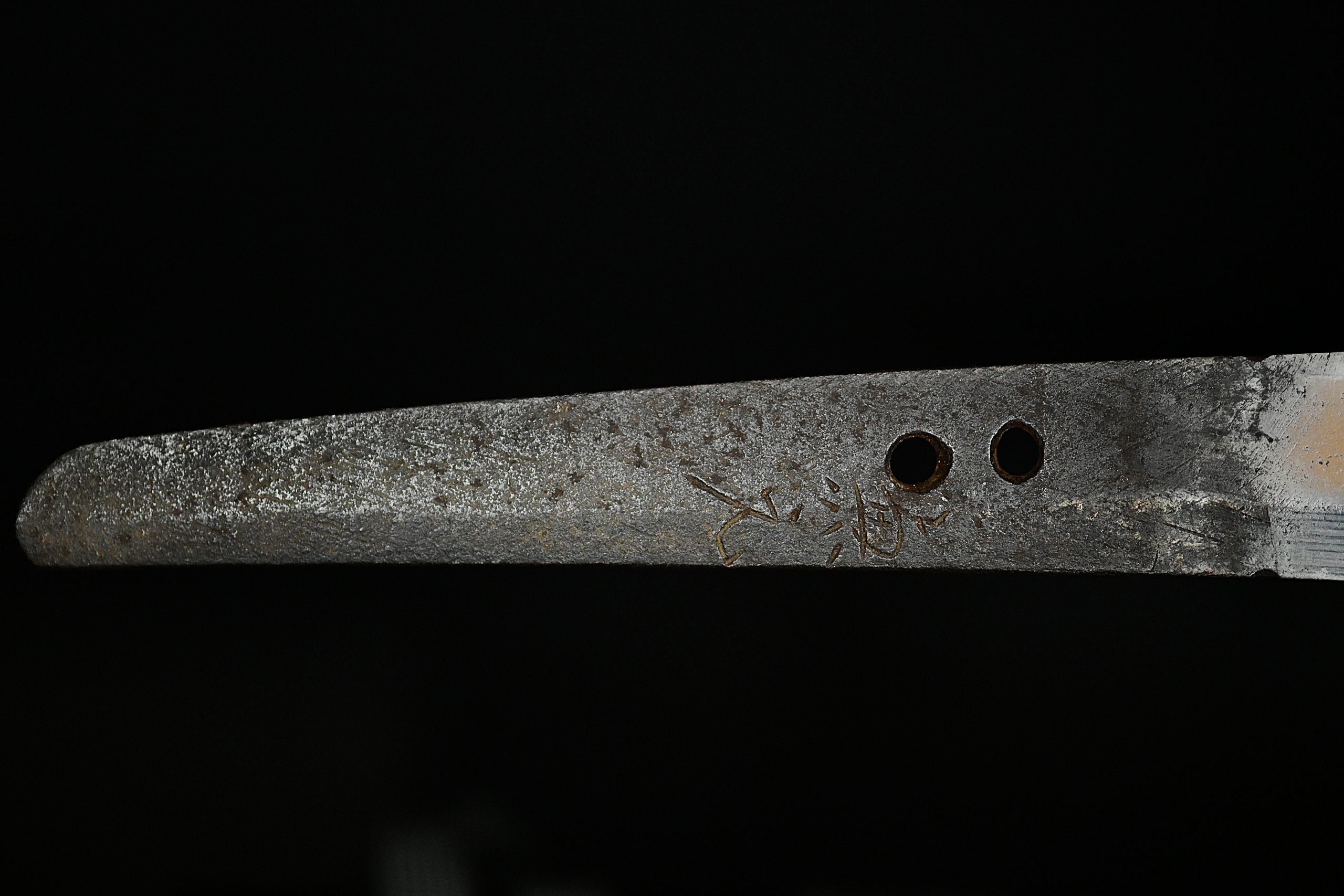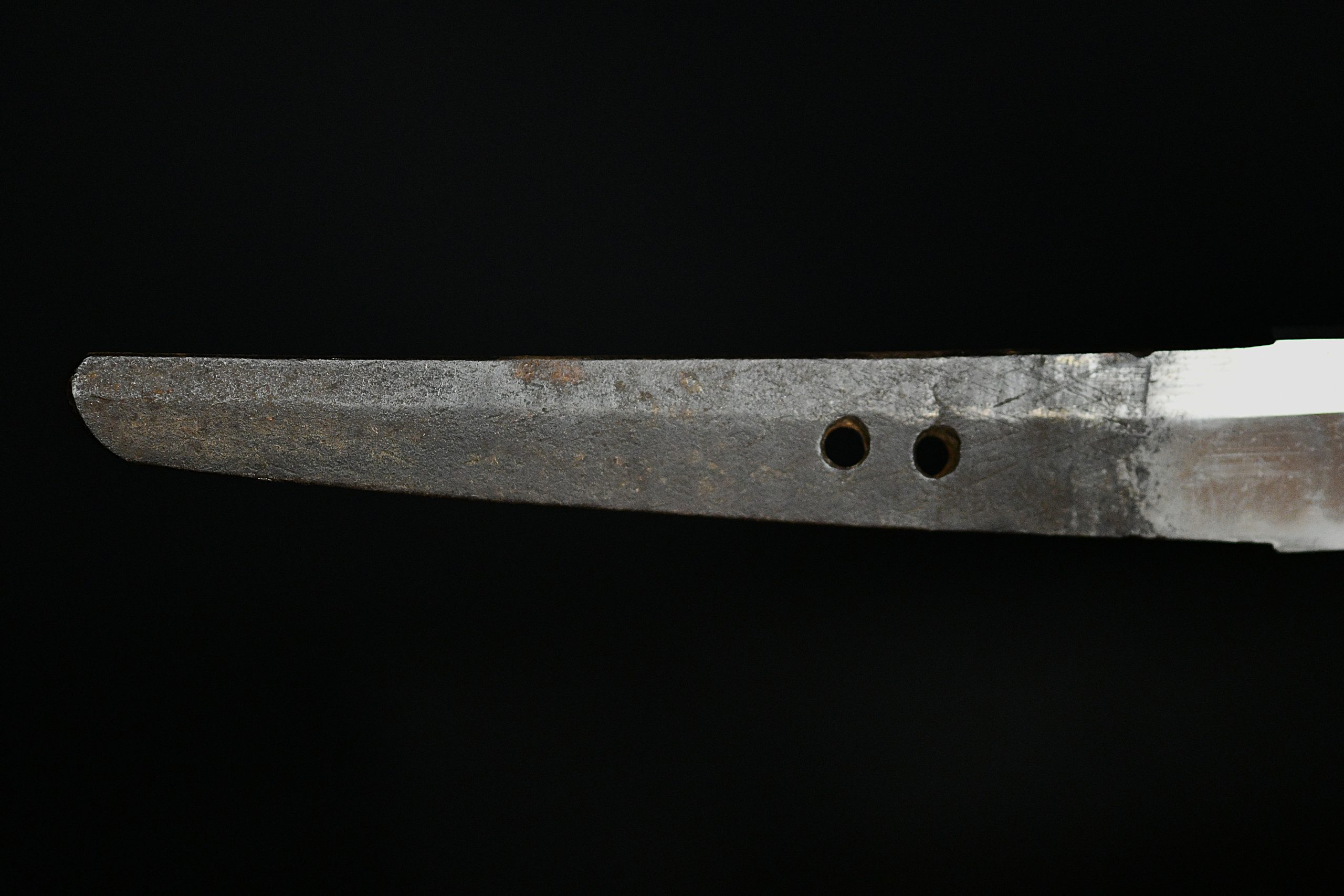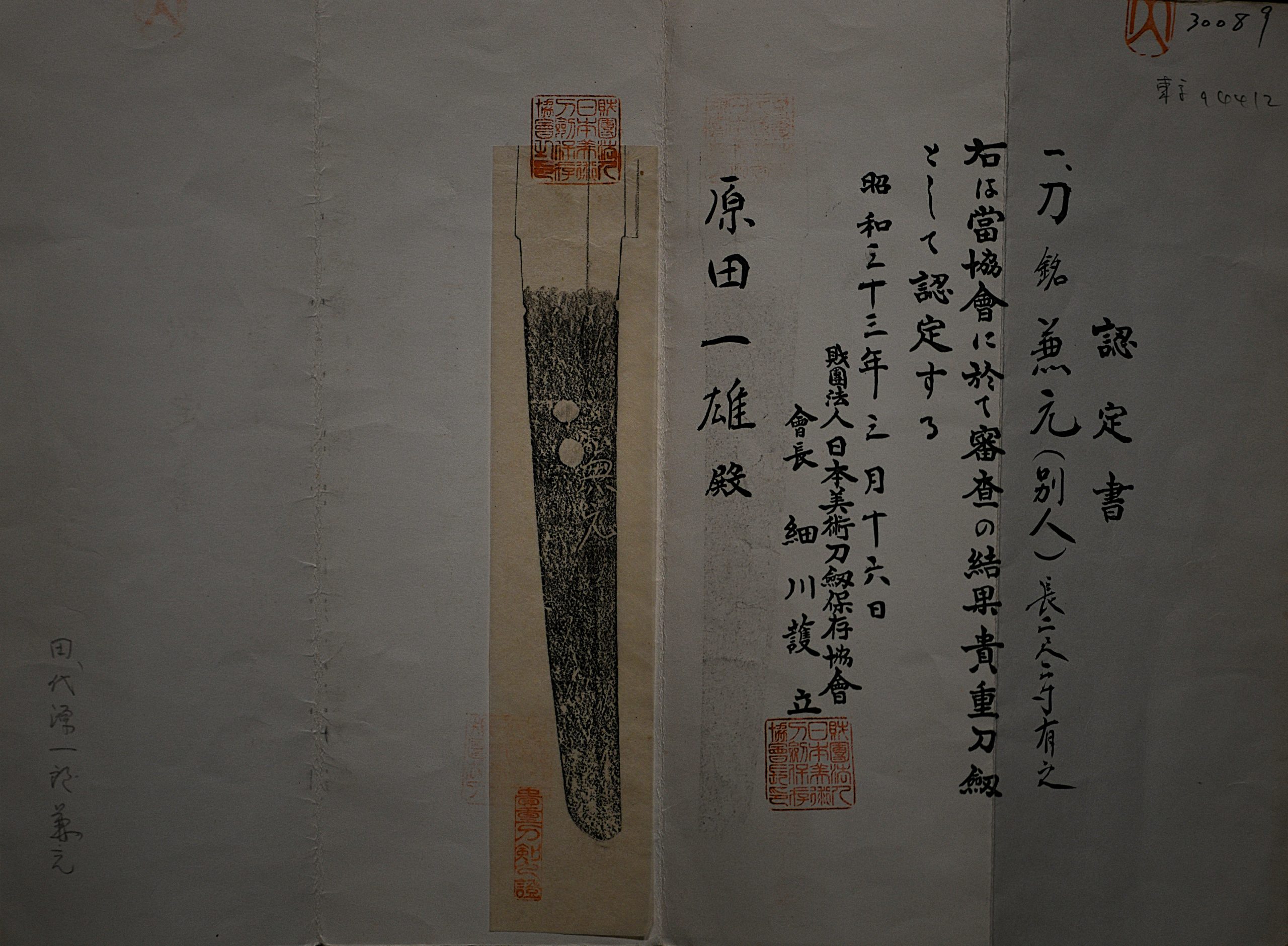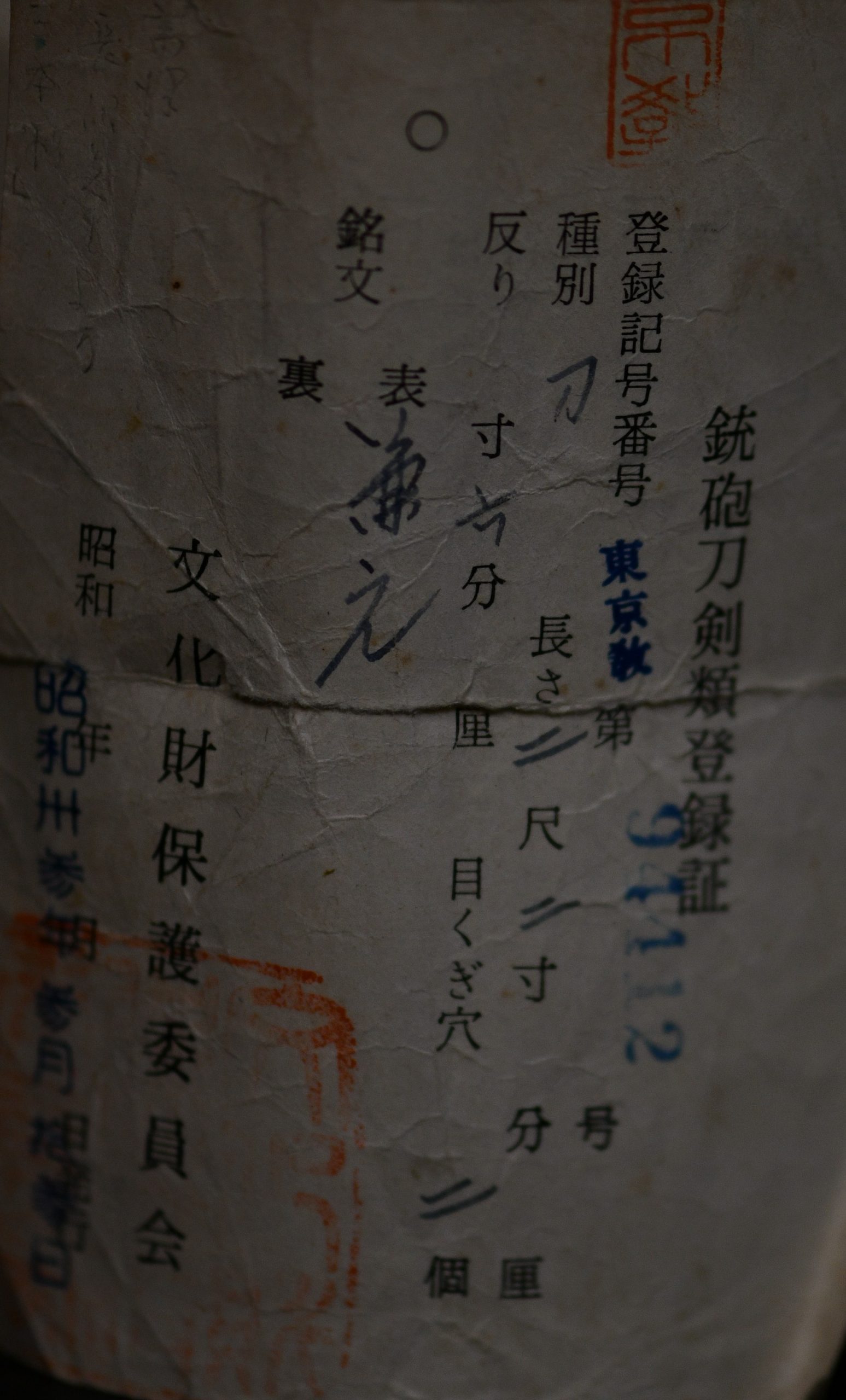Description
ITEM DESCRIPTION:
Comes with kimono or cotton bag. Comes with certificate of supein Nihonto. Comes with original prefecture certificate. Comes with NBTHK Kicho.
Torokusho Translation
Registration number: Tokyo No. 94012
Type: Katana
Length: 64.5 cm
Curvature (sori): 1.8 cm
Mekugi-ana: Two
Signature (mei): Kanemoto (兼元)
Date: February 16, 1958
Authority: Committee for the Protection of Cultural Properties (Bunkazai Hogo Iinkai)
Blade Description
A signed katana by Kanemoto (兼元) of the Mino school, from the Edo period (18th century).
The blade displays the classical gunome-midare togari-ba hamon with pointed peaks and a bright nioiguchi, characteristic of the Kanemoto lineage.
The hada shows a refined itame mixed with masame, tight and clear under polish, with visible steel activity.
The boshi turns back in komaru form, well balanced and cleanly executed.
The proportions are harmonious and the polish highlights the craftsmanship typical of the Edo Mino tradition.
Mounting (Koshirae)
Complete and elegant:
Tsuba: Iron mokkō-gata with copper rim, classic openwork design.
Fuchi/Kashira: Shakudō with gold-inlaid landscapes and temples, Edo craftsmanship.
Menuki: Depicting Buddhist monks (rakan) in copper, silver, and gold, with remarkable expression.
Tsuka: White samegawa with black hinerimaki silk wrapping.
Saya: Glossy black lacquer with gray silk sageo.
A mounting that combines dignity, simplicity, and refinement.
Analysis and Attribution
This blade bears the signature Kanemoto (兼元), one of the most famous names of the Mino-den tradition.
Descendants of the renowned Magoroku Kanemoto continued forging under the same name throughout the Edo period, producing high-quality swords with the distinctive togari-ba hamon.
The features of this blade — the regular peaks, the tight grain, and the clean geometry — clearly place it within the mid-Edo period (18th century) tradition of Seki swordsmiths.
An elegant and powerful example of the Kanemoto lineage.
Technical Sheet
Parameter Detail
Type Katana
Signature Kanemoto (兼元)
School Mino-den (美濃伝)
Period Edo (18th century)
Length 64.5 cm
Curvature 1.8 cm
Mekugi-ana 2
Hamon Gunome-midare togari-ba
Hada Itame with masame
Boshi Komaru
Condition Excellent, traditional polish
Certificate NBTHK Kanteisho (1958)
Torokusho Tokyo No. 94012
Mounting Complete, refined koshirae
